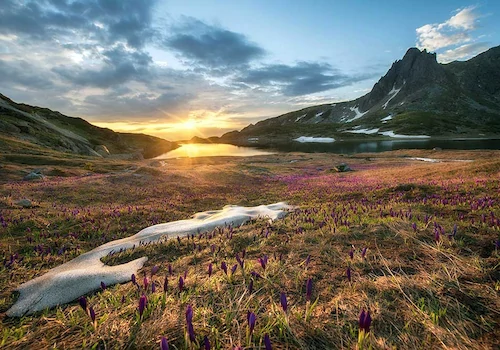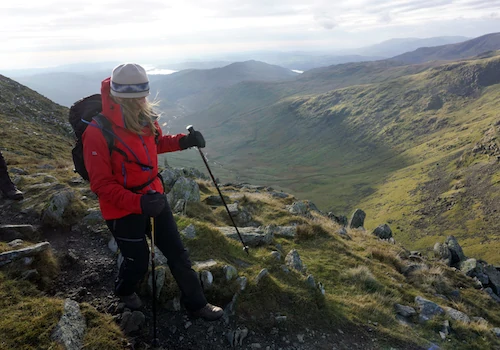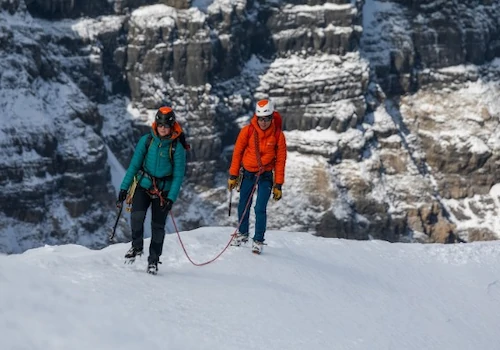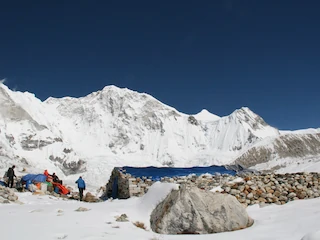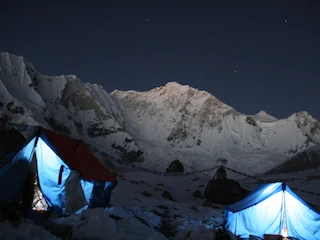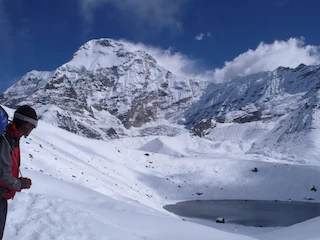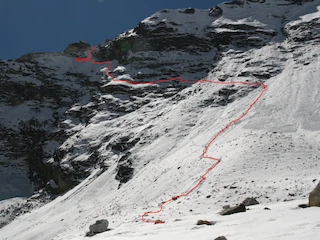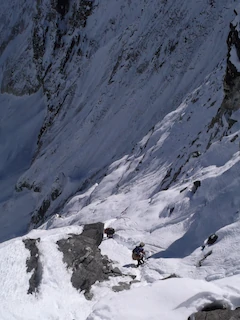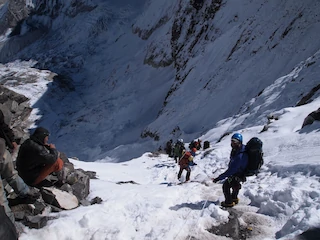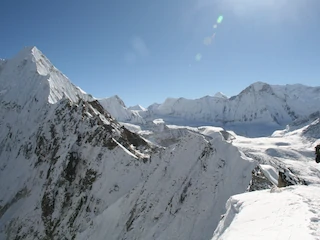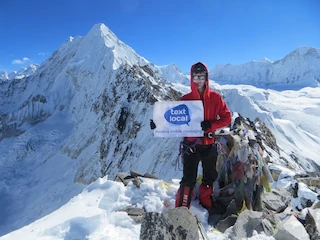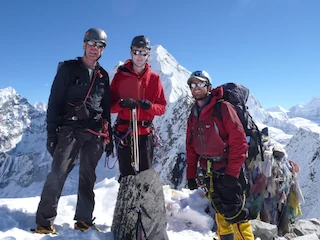
- Expeditions
By Region
By Month
By Grade
By Height
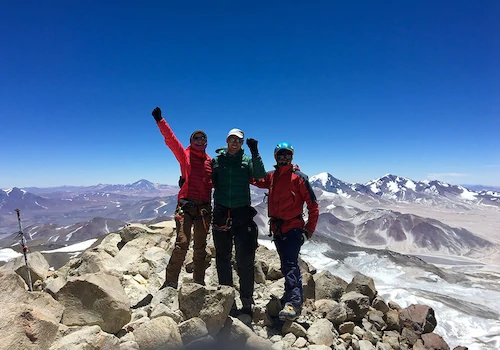
- Treks
- UK & Alpine
- Schools
- Hire
- News
- Shop
Everything you need to know about the Amphu Labtsa Pass

For those planning to visit Mera and Island Peak or Baruntse, we often receive inquiries about what to expect from the Amphu Labtsa pass. This pass is the main route connecting Mera and Island peak or the Baruntse circuit and represents a major technical challenge of the expedition. However, it is often the least discussed aspect of the entire journey. The purpose of this article is to shed some light on what you can expect and provide a clearer picture of this exciting adventure.
The Amphu Labtsa Pass, situated in the stunning Khumbu region of Nepal, is an exhilarating challenge that attracts adventurous climbers from around the world. Its reputation as one of the most demanding mountain passes is well-deserved, but it's also what makes conquering it such a rewarding and unforgettable experience.
After summiting Mera Peak or passing over the Mera la you will enter the Hongu valley. The Hongu Valley is a relatively unexplored area, so you'll likely encounter few other trekkers along the way. This makes for a peaceful and serene experience, as you'll have the mountains to yourself. Along the way, you'll have the chance to see Chamalang, Baruntse and peak 41. Compared to the comfort experienced in the Hinkhu valley with teahouses, accommodation tends to be a little more basic until you get over the pass. Mostly tents and small huts where meals are cooked and eaten.
At an altitude of 5,845 metres, the air is thin and bracing if you have not already been to this altitude, but it adds to the sense of adventure and excitement. The steep and narrow terrain leading up to the pass requires careful attention and skill, but it's also a chance for climbers to showcase their abilities and feel a sense of accomplishment. You will encounter some fixed lines during your ascent where an jumar/ascender will come in handy. Towards the top of the pass there are some sections where you will need to rope together.
The pass itself is a narrow and exposed ridge, which can be a little intimidating, but offers stunning panoramic views of the surrounding peaks that are worth the effort. And while the weather can be unpredictable, it's all part of the excitement of the journey, adding an element of unpredictability and a challenge to be overcome. If the weather is particularly bad, waiting for a good window below has been an option. Only in particularly bad weather and heavy snowfall has the pass been impassable.
The steepness of the Amphu Labtsa Pass varies depending on the section of the pass you are climbing. The approach to the pass is a steep and rocky climb that requires scrambling over some loose rocks and boulders. The pass itself involves a steep ascent up a snow and ice-covered slopes, requiring ice axe and crampon skills. This is followed by a steep and technical descent down the other side. This will require the use of a figure 8 descender on fixed lines. After abseiling the steepest sections you will have to traverse down the north side on some exposed ground where it useful to have your ice axe to hand.
The total elevation gain from the base of the pass to the top is approximately 1,000 meters (3,280 feet), with an average gradient of around 45 degrees. Generally from the high camp on the south side of the pass it can take between 2-3 hours to reach the top of the pass and 3-4 hour to descend to the other side.
Climbers who take on the Amphu Labtsa Pass must possess basic winter skills and know how to abseil, but it's also an opportunity to develop and enhance their abilities. The use of ropes, harnesses, and crampons to navigate the challenging terrain is both exhilarating and rewarding, and climbers feel a sense of pride in their accomplishments.
The remoteness of the location and the self-sufficiency required of climbers adds to the sense of adventure and provides an opportunity to disconnect from the world and embrace the stunning natural surroundings.
The Amphu Labtsa Pass is a thrilling and challenging journey that leaves climbers with an incredible sense of accomplishment, as well as memories and stories that will last a lifetime. It's a chance to push oneself to new heights, both physically and mentally, and to explore one of the most beautiful regions in the world.

About Jordan Cawar
Jordan is well travelled and has been on many expeditions and treks, including, Mera Peak, Island Peak, Elbrus, Kilimanjaro, Morocco, Everest base camp, as well as experience working in the Middle east. Having completed a degree in Outdoor Leadership he is well accustomed with all avenues of the outdoor industry. Jordan can often be found either guiding in the lake district or climbing on the local crags.

